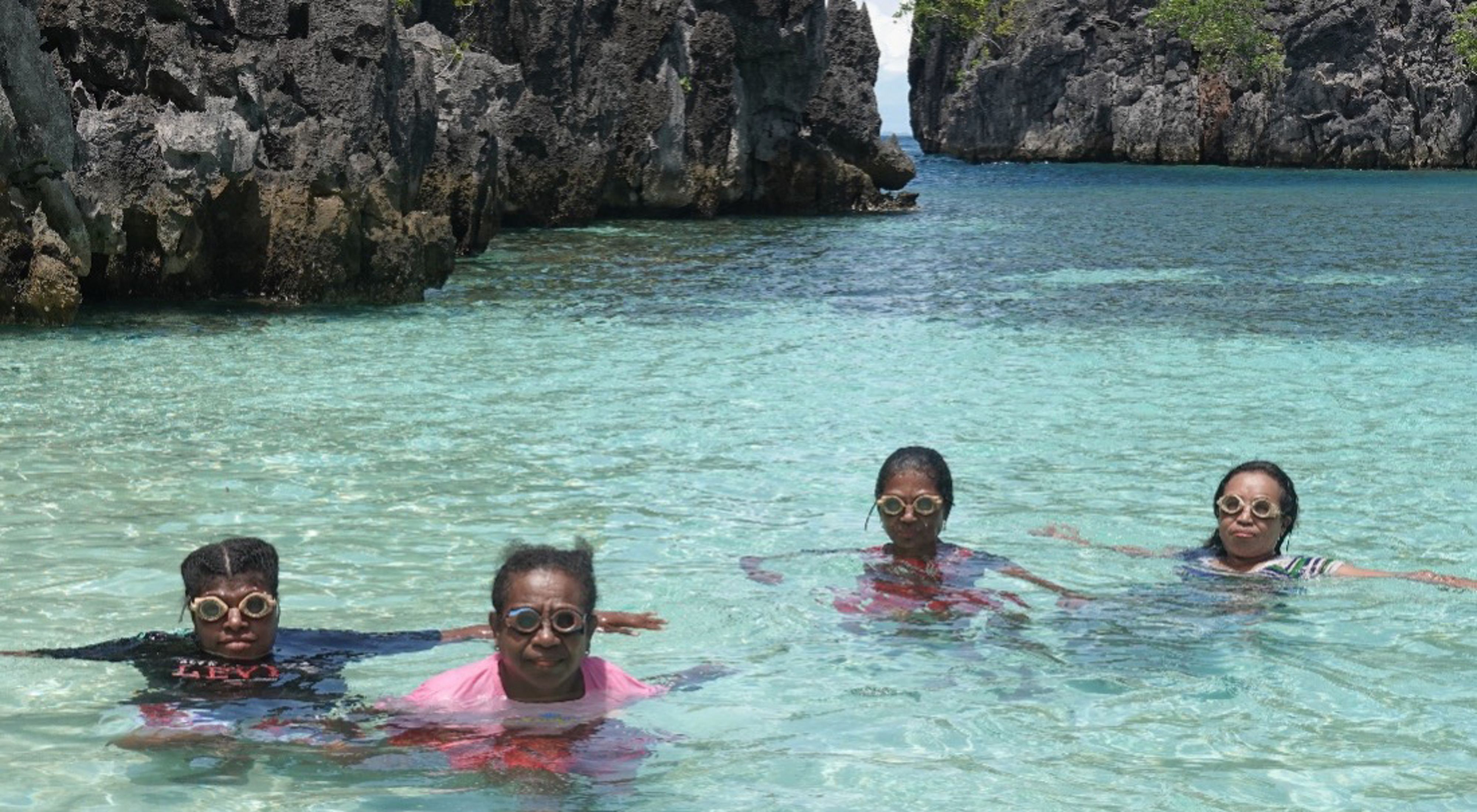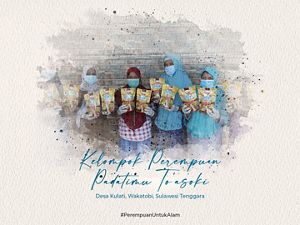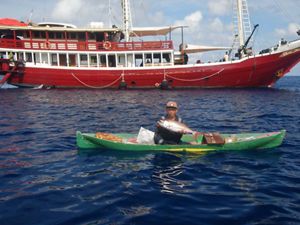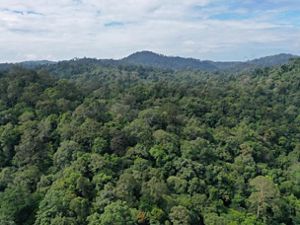Dive into the Other Side of Sasi at Kapatcol
By Herlina Hartanto Ph.D., YKAN Executive Director
For more than two decades, being in the world of conservation sasi is not foreign to me. Still fresh in my memory, the literature I read when I was in college was about the practice of sasi carried out in Maluku and the complexity of its application amid the increasing food needs of a growing population. I also understand this practice has adapted and evolved. Indigenous people who initially apply sasi on land then use it at sea. They combine traditional values and laws with religious and favorable laws to keep the moratorium on natural resource harvesting and customary law relevant and "toothed."

Although sasi is not a foreign concept, my short visit with Yayasan Konservasi Alam Nusantara (YKAN) to Kapatcol Village, West Misool District, Raja Ampat, West Papua, at the end of March 2022 opened new horizons for me. YKAN has assisted this village since 2009 and is located in a remote location. It is 180 kilometers from Sorong, or 5 hours away by speed boat. In the village with about 200 people, this group of women has been running sea sasi since 2011.
They are members of the Waifuna Women's Group, which means a blessing from God Almighty in the local language. The sasi they apply is thick with local customs and conservation values. It provides an opportunity for nature and marine life, such as sea cucumbers and lobsters, to grow and reproduce before being harvested sufficiently. However, the stories of the mothers in Kapatcol Village show different sides of sasi. Here, sasi is more than just a conservation practice. Here, sasi is a place to instill various values and rely on hope.
Persistent determination
One afternoon, Mama Almina Kacili, the head of the Waifuna Group, told a story that the women in Kampung Kapatcol were initially moved to practice sasi because of the limitations they felt. Starting in 2012, they had nothing to celebrate Easter. This sense of helplessness prompted them to develop the idea of a women's sasi running in a different location from the men's sasi. The hope is that when sasi open in the areas they protect, they can use the harvest to contribute to village life.
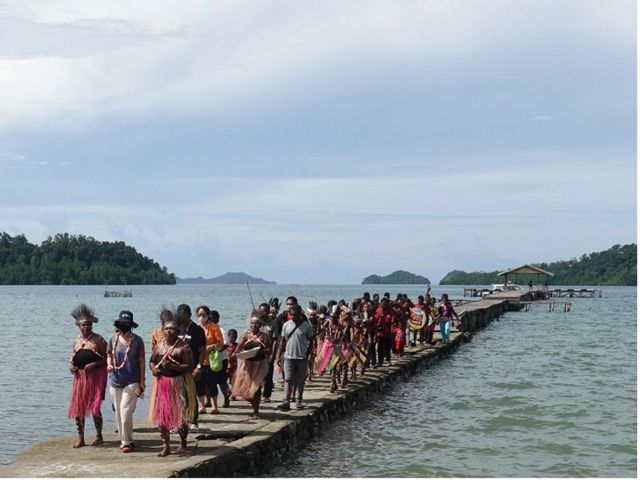
When asked how the men in Kapatcol responded to this idea, Mr. Kristian Kacili, Secretary of the Povun Kapatcol Forest Farmers Group, said that they first doubted that women's sasi would be followed by fishermen from outside the village. As we know, customary law is generally followed by local indigenous community members but is challenging to apply to outsiders. Sasi, run by the people, will face more significant challenges. Even so, the fathers in this village still support and provide opportunities for the Waifuna Group.
The Waifuna Group's initiative did not produce results in the first year, "empty." This early failure did not quell their resolve. Instead, they were compelled to look for new sasi locations. In this new location, women's sasi continues to this day. "Even though we are full of shortcomings, we are still enthusiastic," said Mama Yorina, a teacher and a member of the Waifuna Group.
Subscriber exlusive: Reef Conservation Agreements - Dawera
Passion and fortitude are needed to run sasi. Even though the women in Kapatcol Village are excellent divers, accustomed to freediving to a depth of 7-8 meters using natural goggles made of homemade wood, they still have difficulty dealing with the waves and strong winds that occur for three whole days during the opening period of sasi in March 2022. Supposedly, after applying sasi for a year, it's time to harvest the results. However, they have to deal with the impacts of climate change, and they also have to face rising fuel prices.

Like it or not, Waifuna members have to set aside funds to pay for boat fuel to reach the sasi location and pay for divers. "The results of this year's sasi are few. We had to set aside Rp. 2 million for the cost of fuel for the boat engine and the diving gentlemen. The remaining funds from the sale of sea cucumbers and lobsters are only Rp. 1.7 million," said Mama Almina. This fund becomes the group's treasury and is used for various needs of the villagers. In previous years, the proceeds from the sasi harvest were used for group needs, religious activities, and even to support the education of young people in the village.
Hopes from sasi
On sasi, the women of Kampung Kapatcol rely on hope. Hopes that their children can get higher education and serve the village. The hope is that the positions of teachers and midwives in Kapatcol will one day be held by their children. Waifuna members continue the initiative of Mama Betsina Hay, the pioneer of women's sasi in Kampung Kapatcol, who died in 2015. Waifuna mamas hope that their children can continue women's sasi in the future. Without Mama Betsina, there would be no female sasi in Kapatcol. Without the interest and commitment of young women, there will be no female sasi in Kapatcol in the future.

Yunita Mulyani Amberbaken, daughter of Mama Agustina, stated that the young women were ready to help their mothers, who had already completed their school fees through sasi. Hopefully, this will be a sign that the sustainability of women's sasi is not just a hope.
Even though it was short, my visit to Kampung Kapatcol made a deep impression. I still remember the warm welcome from the mothers, the lively flute tambourine music played by the youth group, the stories I heard that afternoon, and the excitement of swimming with the mothers at the end of the visit.
I came to Kapatcol to hear about conservation initiatives. I returned home with a new understanding of the other side of sasi. Although the values and expectations that the mothers in Kapatcol village hang on to sasi are not conservation-related, they are equally noble and give even more profound meaning to their sasi initiatives.

Together with their hopes, I entrust one more hope: the Waifuna Group initiative in this remote village in West Misool will inspire many people. "I came here because of sasi," said Mama Yorina. I'm sure I'm not the last person who will visit Kampung Kapatcol to seek inspiration from the struggle and enthusiasm of the mothers in this remote place.
I hope that the sasi story in Kapatcol will reach more women in Indonesia, even in many places in the world. Because when women are empowered, we can more quickly realize our big dream to see people live prosperously amid a sustainable nature.


